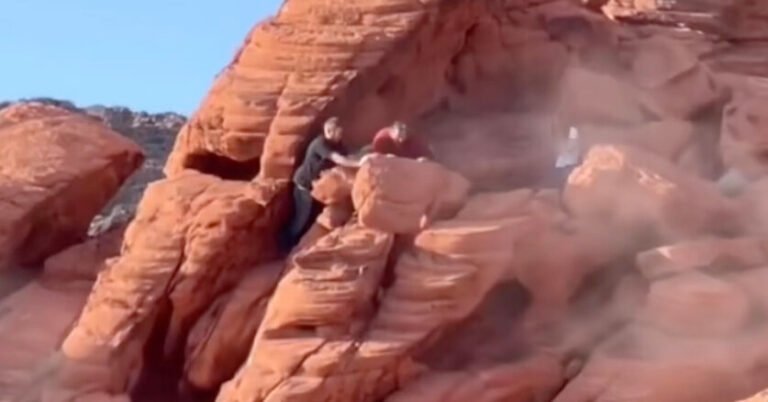
Two men were indicted last week on charges that they damaged an ancient rock formation at Lake Mead National Recreation Area in Nevada in April, federal prosecutors said. A video appeared to show the men toppling some of the rocks.
The men, Wyatt Clifford Fain, 37, and Payden David Guy Cosper, 31, were each charged with one count of injury and depredation of government property and one count of aiding and abetting, the U.S. Attorney’s Office in Nevada said in a statement on Friday.
According to the indictment, on April 7, Mr. Fain and Mr. Cosper pushed large chunks of ancient rock formations over the edge of a cliff onto the ground below while on or near the Redstone Dunes Trail at the Lake Mead National Recreation Area, causing more than $1,000 in damages.
A video posted on the same day showed two men with their legs bent appearing to push the large red rocks.
“Don’t fall … Daddy! Daddy!” a young girl is heard in the background of the video.
As the men tried to move the rocks, another person can be heard off-camera saying, “But why?”
The National Park Service, which investigated the case, sought help from the public earlier this year to identify the two men in the video. The United States Marshals Service arrested Mr. Fain and Mr. Cosper on Friday in Las Vegas.
A public defender for Mr. Fain said he does not comment on pending cases. A lawyer for Mr. Cosper did not immediately respond to a request for comment on Monday, but told ABC News that “there were no signs posted at the entrance prohibiting pushing rocks” or warning that it was a “federally protected site.”
Both men were arraigned on Friday and pleaded not guilty, according to court records. They were released on a personal recognizance bond.
A trial has been scheduled for October, prosecutors said. If convicted, the men could each face up to 10 years in prison.
Established in 1936, Lake Mead National Recreation Area covers 2,338 square miles along the Colorado River. It extends from the western edge of Grand Canyon National Park to below Davis Dam.
Visitors to the area are drawn to the sandstone formations on the Redstone Trail, which were shaped over time by geological forces from 140-million-year-old dunes, according to the National Park Service.